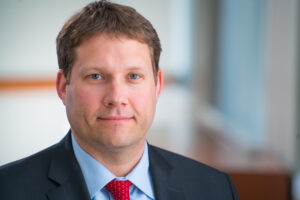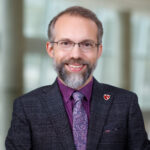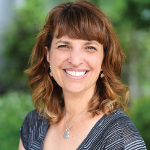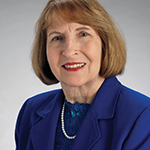 The diversity of the ARP’s membership is what originally drew Adam Goode, PT, DPT, PhD, to the organization, enticed him to begin volunteering more than a decade ago and now galvanizes him as he becomes the new ARP president.
The diversity of the ARP’s membership is what originally drew Adam Goode, PT, DPT, PhD, to the organization, enticed him to begin volunteering more than a decade ago and now galvanizes him as he becomes the new ARP president.
Dr. Goode’s career spans specializations ranging from physical therapy to chronic pain and epidemiology. He earned his AS as a physical therapist assistant from the College of West Virginia, Beckley, in 1999, a BS in natural science from Mountain State University, Beckley, W.Va., in 2002, and a DPT in 2005 from Duke University, Durham, N.C., where he became a faculty member. He then added studies in epidemiology to his repertoire and completed an additional doctorate in epidemiology from the University of North Carolina, Chapel Hill, in 2011.
Currently, Dr. Goode holds two positions at Duke: vice chair of clinical research and epidemiology in the Department of Orthopaedic Surgery, and professor of orthopaedic surgery. His research centers on chronic low back pain, including recent projects using biomarkers, magnetic resonance imaging and artificial intelligence to gain insights into low-back osteoarthritis and its symptoms.

Dr. Goode
His volunteer work for the ARP includes serving as a member of the Clinical Focus Course Task Force, Executive Committee, Committee on Research, Committee on Ethics and Conflict of Interest, and RheumPAC; chair of the Research Subcommittee; and co-chair of the joint ACR/ARP Committee on Membership and Awards.
The Rheumatologist (TR) spent some time with Dr. Goode to learn more about his introduction to, and continuing involvement in, the ARP, how he views the association’s strengths, and what he has planned as its new president.
TR: You have had quite a varied professional career. What was the path that took you from being a physical therapist assistant to earning doctorates in physical therapy and epidemiology, and to conducting research?
Dr. Goode: My journey started as a licensed physical therapist assistant in a southern West Virginia orthopedic outpatient clinic that focused on chronic pain, especially chronic low back pain. I became interested not just in physical therapy as a career, but also in understanding and helping patients with chronic pain regain function and return to work. Before long, I decided to pursue my DPT at Duke, and on completion, I immediately joined the faculty, doing a combination of clinical practice and teaching in the physical therapy program.
During that time, I also became interested in doing research, which led me to [obtain] my epidemiology degree and also to start work in the area of spinal osteoarthritis. It was that research that connected me with a couple of my mentors, who in turn introduced me to the ARP and ACR. They were Jan Richardson and Joanne Jordan. [Note: Jan Richardson, PT, PhD, OCS, FAPTA, is faculty emeritus at Duke’s School of Medicine and former president of the ARHP, now the ARP. Joanne M. Jordan, MD, MPH, is emeritus professor of medicine at the University of North Carolina Division of Rheumatology, Allergy, and Immunology, and has been active in the ACR, including serving on its Board of Directors.]


